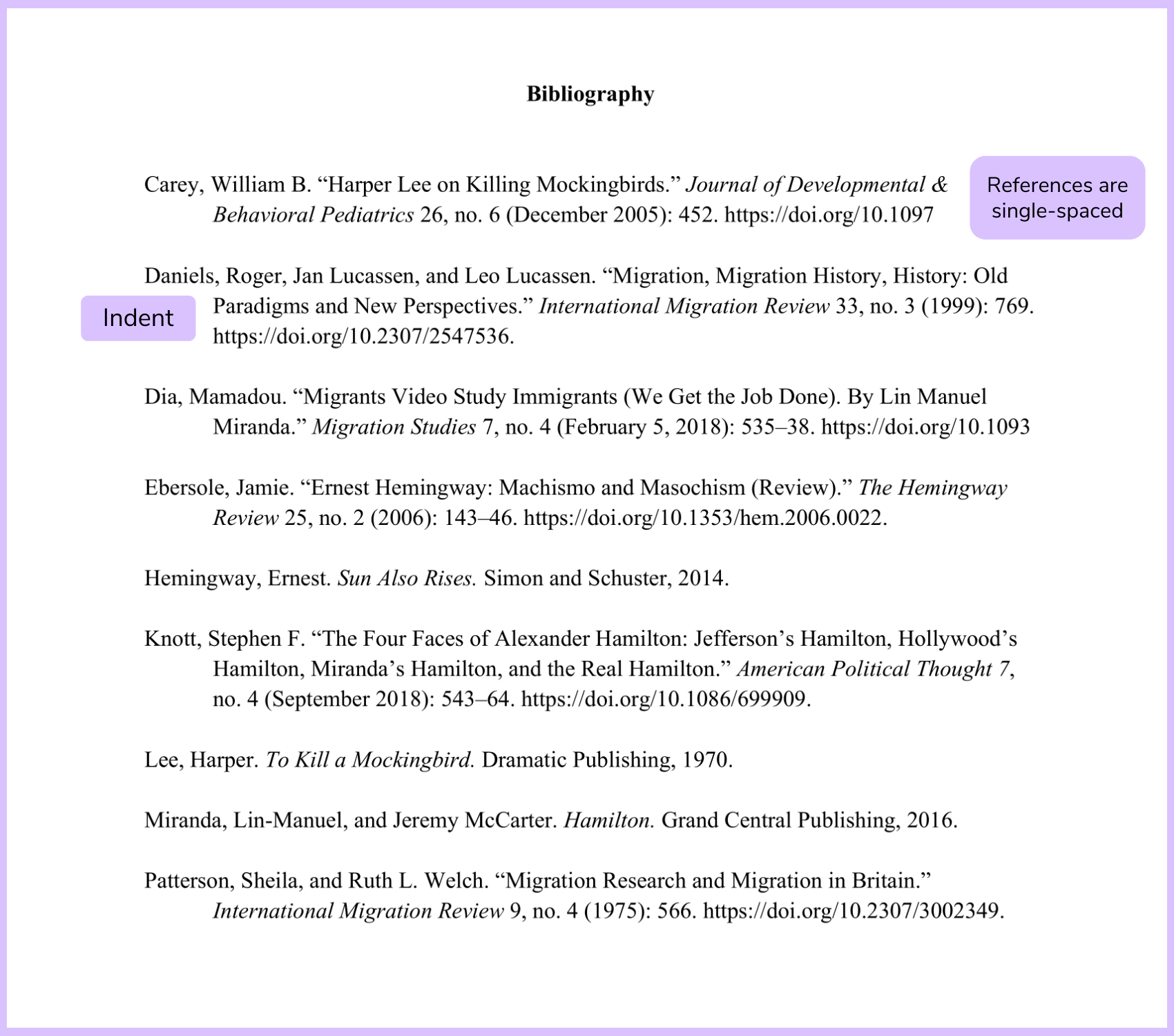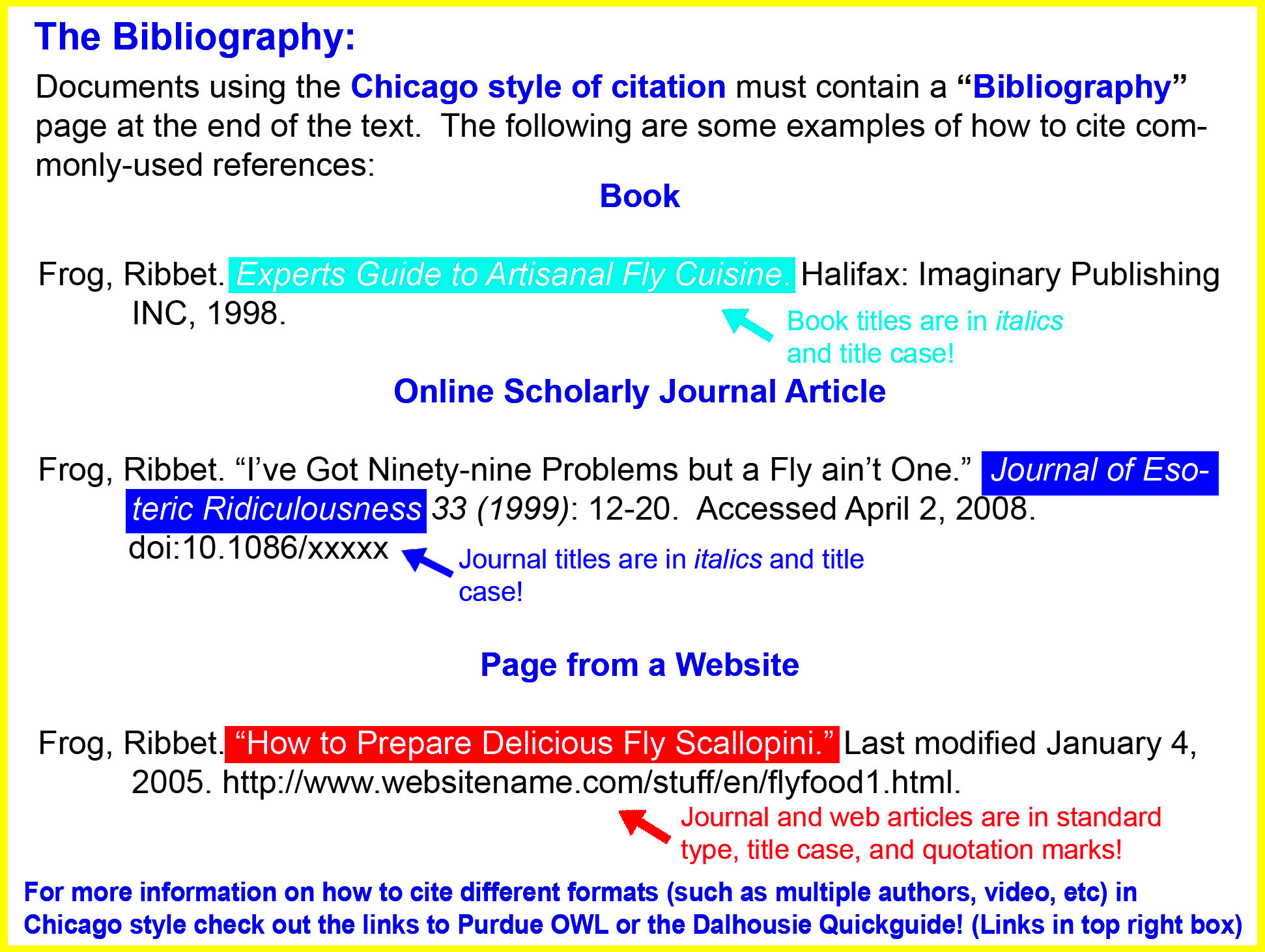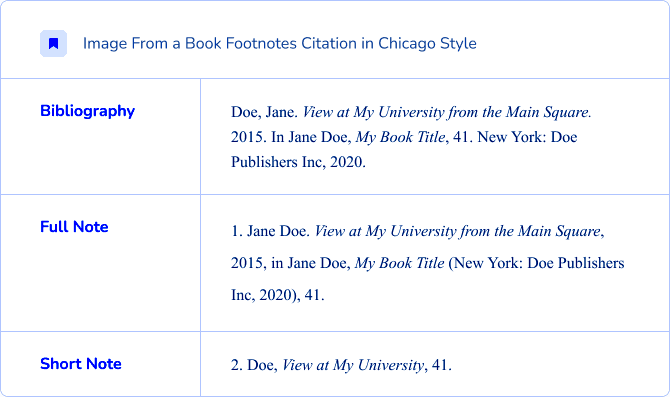When writing academic papers, it's essential to give proper credit to the sources you use, including images. The Chicago Manual of Style offers a specific format for citing images, ensuring you maintain academic integrity. Citing images properly helps readers locate the source and acknowledges the work of the creator. Whether you're including images in your research paper, thesis, or any academic project, understanding how to cite images in Chicago Style will save you time and prevent potential issues with plagiarism.
Understanding the Chicago Style Citation Format for Images

The Chicago Style citation format for images follows a straightforward structure, but it’s important to include all the necessary details. Typically, you’ll need the following information:
- Creator's Name: The artist, photographer, or creator of the image.
- Title of the Image: The official title or description of the image.
- Date of Creation: The year or date the image was created.
- Location of the Image: The collection, archive, or website where the image is stored.
- Source Information: This includes the publisher or the link if the image is from an online source.
Here's an example format:
Creator's Last Name, First Name. Title of Image. Year of creation. Location. URL or publication information.
For example, an image from an online gallery might look like this:
Smith, John. Sunset Over the Mountains. 2020. Image Archive, https://www.example.com.
Be sure to follow these rules closely when citing your images in Chicago Style to ensure your citations are clear and complete.
How to Cite Images from Books or Journals

Citing images from printed books or journals requires a bit more attention to detail since these sources are physically published. The format will include all the standard information found in Chicago Style citations, with some additions to specify that it’s an image. Here's how to structure it:
- Creator's Name: As always, begin with the creator's name (artist, photographer, etc.).
- Title of the Image: Include the image's title or description in italics.
- Title of the Book or Journal: The title of the book or journal in which the image appears. This should be in italics.
- Publisher and Year: The publisher of the book or journal, followed by the year of publication.
- Page Number: If the image is in a specific part of the book or journal, include the page number where the image appears.
Here’s an example:
Doe, Jane. The Forest at Night. In Nature Through the Lens, edited by John Smith, 45. New York: Nature Publishing, 2018.
This citation shows the image title, the book’s title, the editor's name, and the page number where the image can be found. If the
How to Cite Images from Online Sources
Citing images from online sources is a common task in today's digital world. With so many resources available, it’s important to follow Chicago Style to give proper credit to the creator and source. When citing images from websites, you need to include more than just the image’s title and creator. Make sure to include details like the website's name, the publication date (if available), and the URL where the image can be accessed. This ensures that readers can locate the
Here’s what you need to include in a citation for an online image:
- Creator's Name: The artist or creator of the image, if available.
- Title of the Image: The title or description of the image, italicized.
- Website Name: The name of the website or online collection hosting the image.
- Publication Date: The date the image was published or last updated. If there is no date, use "n.d." for "no date."
- URL: The full URL where the image can be found.
- Access Date: This is important for web-based sources that may change over time.
Here’s an example:
Doe, Jane. "Sunset Over the Mountains." Nature Gallery, last modified July 15, 2020. https://www.naturegallery.com/sunset-over-the-mountains.
By following these steps, you can ensure your citation is correct and that readers can find the image themselves, even if it’s hosted on a constantly changing website.
How to Cite Images from Databases or Archives
Citing images from databases or archives involves a similar process to online sources but requires attention to specific details. These sources often contain images from historical collections, galleries, or specialized archives. In these cases, you need to provide more precise information about the database or archive hosting the image, as well as any additional metadata.
To cite an image from a database or archive, make sure to include:
- Creator's Name: The name of the creator of the image, such as the artist, photographer, or photographer.
- Title of the Image: The image’s title, or a brief description if the title is not provided.
- Title of the Database or Archive: The name of the database or archive that holds the image.
- Database or Archive Information: Information on how to access the database, such as the publisher or institution hosting the database.
- Catalog Number or Identifier: Include the catalog number or other identifying code for the image, if available.
- URL: The URL or direct link to the image, or the home page of the archive/database if a direct link is not available.
- Access Date: The date you accessed the image, especially if the database is regularly updated.
Example citation:
Jones, Mary. "Ancient Pottery." In Historical Images Database, accessed September 25, 2023. Museum of Antiquities, http://www.historicalimagesdb.com/ancient-pottery.
By following this format, you ensure that the image can be traced back to its original source, allowing for proper academic referencing.
How to Format Captions for Images in Chicago Style
Captions are important when you include images in your academic work. Chicago Style offers clear guidelines on how to format image captions, ensuring they provide enough information while remaining concise. The purpose of a caption is to give readers a brief description of the image, along with credit to the creator. Formatting it correctly helps readers understand the relevance of the image in relation to the text.
Here’s how to format captions for images in Chicago Style:
- Figure Number: Start with the word “Figure” or “Fig.” followed by a number (e.g., Figure 1, Fig. 2). This makes it easy for readers to reference images in your paper.
- Description of the Image: Provide a brief but informative description of the image. This helps the reader understand what the image shows.
- Creator's Name: Include the name of the creator (e.g., photographer, artist). For a well-known image, this will be a vital reference.
- Source Information: Include the source of the image (book title, article, website, etc.), just like in a full citation. If the image is from a published work, include the full reference.
Here’s an example of a caption:
Figure 1. "Sunset Over the Mountains," photograph by Jane Doe. From Nature's Beauty (New York: Nature Press, 2020), 25.
Remember to place the caption directly below the image and format it in the same font and size as the rest of the text. Be sure to include all relevant information, so readers can find the image and understand its context within your paper.
Common Mistakes to Avoid When Citing Images
When citing images, especially in Chicago Style, it's easy to make mistakes that can undermine the credibility of your work. A small error in the citation can cause confusion for your readers and may even be seen as academic dishonesty. To avoid these pitfalls, here are some common mistakes to watch out for:
- Missing or Incorrect Creator Information: Always include the creator’s name. If the creator is unknown, use "Anonymous" or "Unknown" instead. Omitting this detail can make it difficult to trace the source of the image.
- Not Including the Image Title: It's essential to include the title or a brief description of the image in italics. Not providing a clear title can confuse readers and make it hard to identify the image you're referring to.
- Incorrect Formatting: Chicago Style has specific rules for punctuation, capitalization, and italicization. Be sure to follow these carefully—especially when citing online sources and databases.
- Forgetting the URL or Access Date: If you’re citing an online source, always include the URL. In many cases, you'll also need to include the access date to show when you viewed the image, especially if it’s from a source that could change over time.
- Overlooking the Source Type: The format for citing images varies depending on whether the image comes from a book, website, or archive. Always match your citation to the type of source it is.
- Incorrect Captioning: Make sure that captions are concise but informative. They should reference the figure number and describe the image clearly.
Avoiding these common mistakes will make your image citations more accurate and professional, contributing to the overall quality of your academic work.
FAQ: Frequently Asked Questions About Citing Images in Chicago Style
Here are some frequently asked questions to help clarify any confusion about citing images in Chicago Style:
- Do I always need to include the creator’s name? Yes, if the creator’s name is available. If the creator is unknown, you can use "Anonymous" or "Unknown" in place of the name.
- How do I cite an image from a social media platform? For social media images, include the creator’s name (if available), the title (or a description of the image), the social media platform, the post date, and the URL. For example: Doe, Jane. "Beautiful Sunset," Instagram, March 10, 2023. https://www.instagram.com/p/xyz123.
- Can I cite an image without a specific title? Yes, you can use a brief description in place of the title, such as “Untitled photograph of a city skyline.”
- How do I format captions for multiple images? If you are citing multiple images, number them consecutively (e.g., Figure 1, Figure 2) and make sure each caption follows the same format, with the figure number, description, and source information.
- What if the source is a database but there is no specific publication date? If the database doesn’t have a publication date, use "n.d." (no date) to indicate this in your citation.
These answers should cover most common concerns, but it’s always a good idea to refer to the latest edition of the Chicago Manual of Style for more specific guidelines.
Conclusion: The Importance of Proper Image Citation
Properly citing images in Chicago Style is not just about following academic rules—it’s about maintaining integrity in your work. Accurate image citations give credit to creators, allow others to locate the original sources, and demonstrate your attention to detail. When you include images in your academic work, whether they are photographs, artwork, or charts, it’s crucial to provide clear and correct citations. This ensures that you respect copyright laws and uphold academic standards. By following Chicago Style guidelines, you make your work more credible and help others engage with your sources in an informed way.
In the long run, learning how to cite images properly will save you time and frustration. So, take the time to learn the rules and apply them consistently. Your readers will appreciate it, and your academic reputation will benefit.











